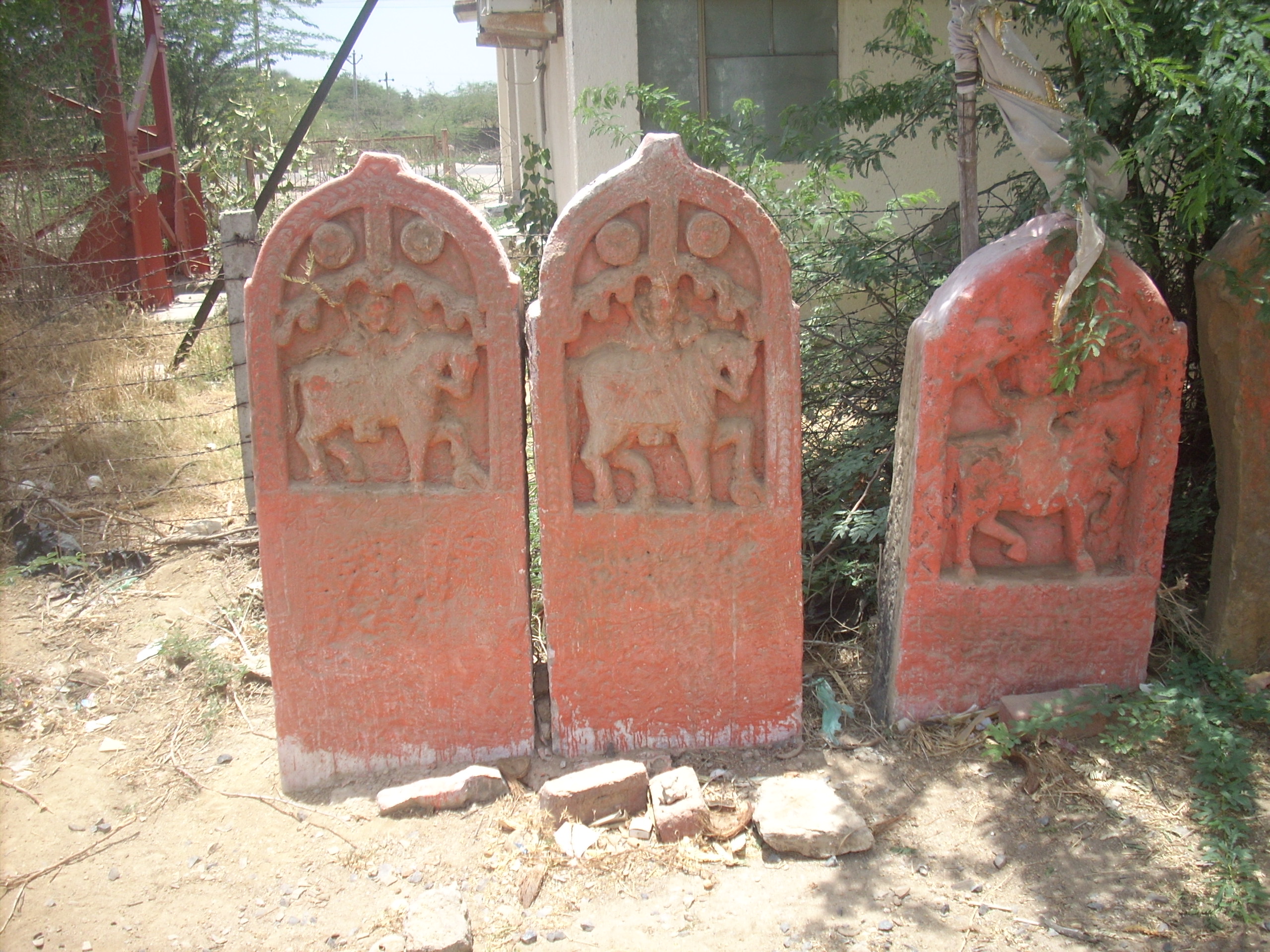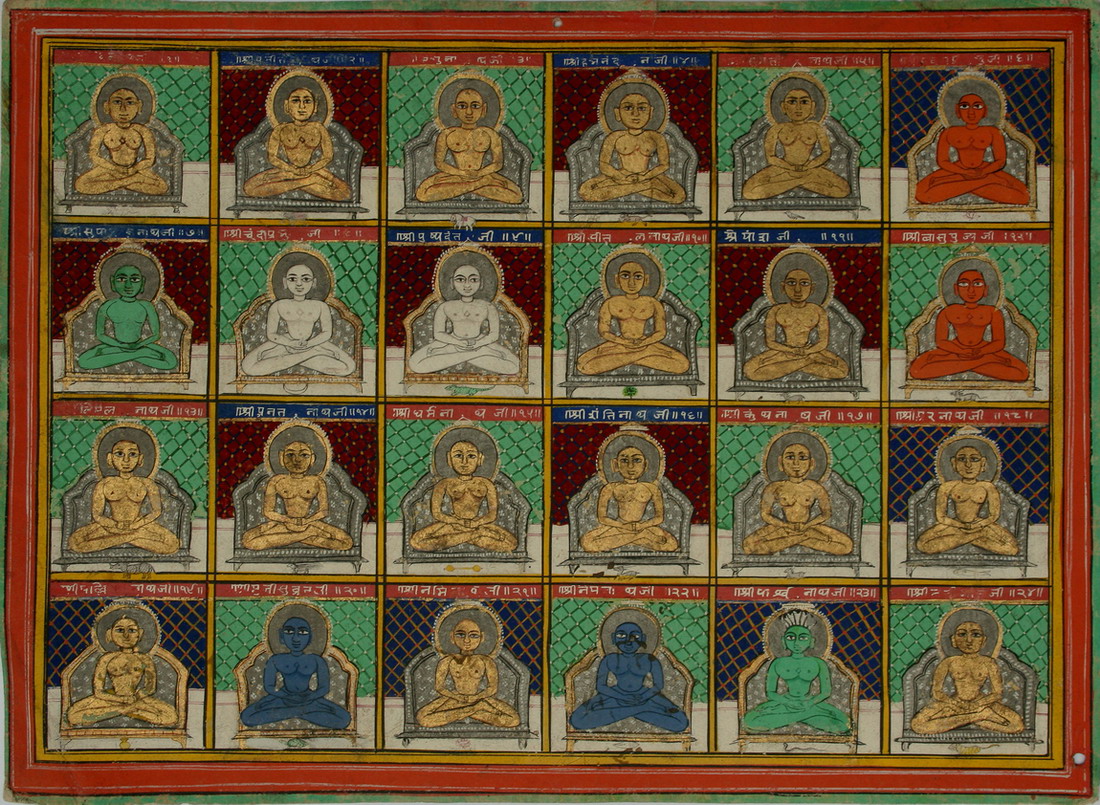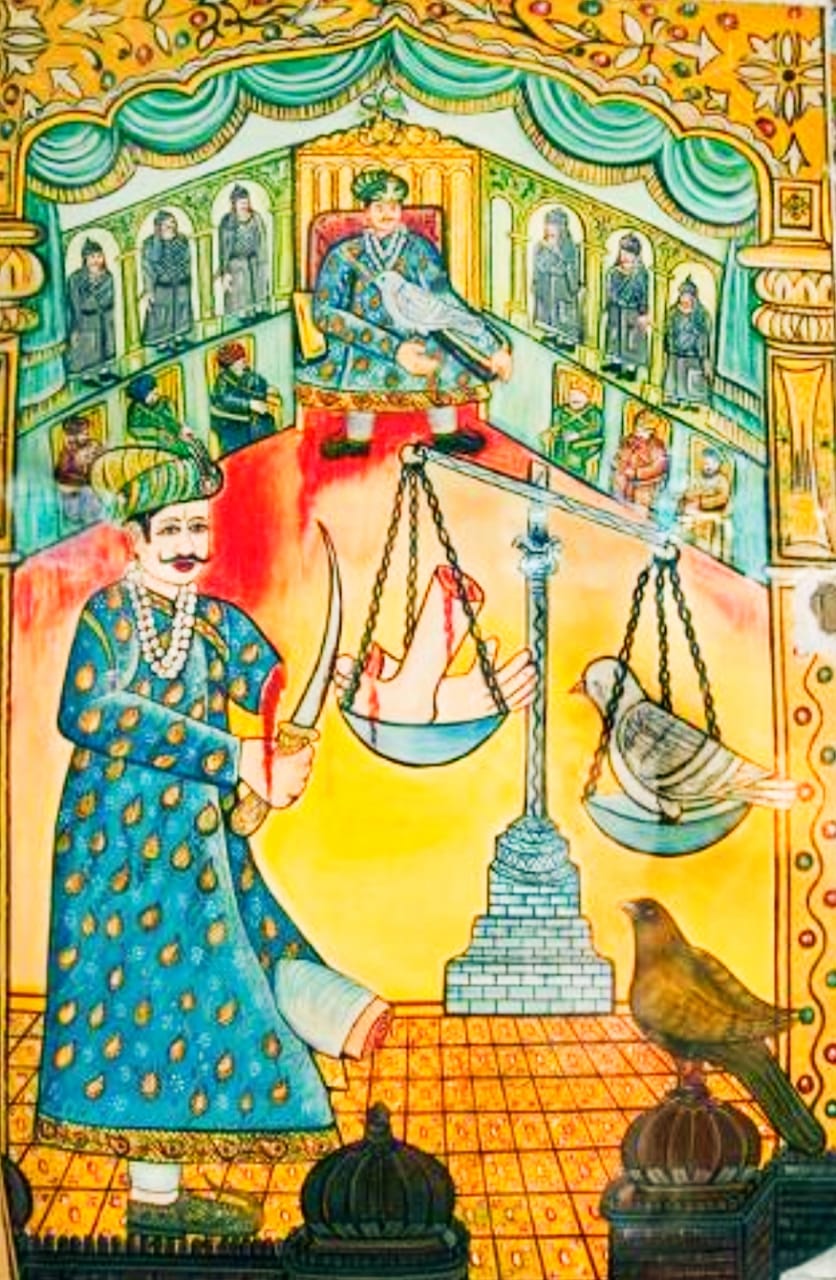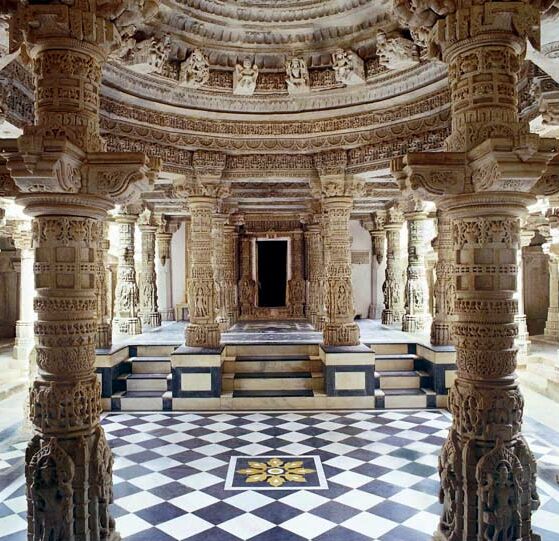|
Bhadreshwar Jain Temple
Bhadreshwar Jain Temple, also known as Vasai Jain Temple, is a historical importance located in Bhadreshwar village of Mundra Taluka, Kutch, Gujarat, India. History According to Bantvijaya Chronicles, a 19th-century Jain scripture composed by Acharya Bantvijaya, the temples date back to 516 BCE (Vira Nirvana Samvat 12) during the reign of Raja Siddhasen. The idol of Parshvanatha was installed by Shri Kapil Kevali Muni in the 5th century BCE. The temple was also renovated by King Samprati, of the Maurya dynasty, and installed stone idols elephant outside temple. The temple was later renovated by Vanaraja Chavda, Sarangadeva, Virasena and Harisen. The first reference to this temple dates back to the 8th century. It is said a Jain layman named Devchandra laid the foundation stone of this temple centuries ago. The temple was renovated extensively by Jagdusha in 13th century. Since then, the temple has been renovated nine times and the temple plan expanded to include 52 dev-kulikas. ... [...More Info...] [...Related Items...] OR: [Wikipedia] [Google] [Baidu] |
Jainism
Jainism ( ), also known as Jain Dharma, is an Indian religions, Indian religion whose three main pillars are nonviolence (), asceticism (), and a rejection of all simplistic and one-sided views of truth and reality (). Jainism traces its spiritual ideas and history through the succession of twenty-four , supreme preachers of ''dharma''. The first in the current time cycle is Rishabhadeva, who tradition holds lived millions of years ago; the 23rd is Parshvanatha, traditionally dated to the 9th century Common Era, BCE; and the 24th is Mahāvīra, Mahavira, who lived . Jainism is considered an eternal ''dharma'' with the guiding every time cycle of the Jain cosmology, cosmology. Central to understanding Jain philosophy is the concept of ''bhedavijñāna'', or the clear distinction in the nature of the soul and non-soul entities. This principle underscores the innate purity and potential for liberation within every Jīva (Jainism), soul, distinct from the physical and menta ... [...More Info...] [...Related Items...] OR: [Wikipedia] [Google] [Baidu] |
Mistris Of Kutch
Kutch Gurjar Kshatriya (also known as Mistri or Mestri) are a minority Hindu community of Gujarat in India, who claim to be Kshatriya. They are an artisan community related with masonry, artistic carvings, sculpting and building and construction works. They are also known as the Mistris of Kutch adopting word Mistri, a term used in British India for master-craftsman, thekedar, foreman or supervisor or for those who were expert in building and construction.Mistri Encyclopaedia of Backward Castes By Neelam Yadav Page 316. History  The community is believ ...
The community is believ ...
[...More Info...] [...Related Items...] OR: [Wikipedia] [Google] [Baidu] |
Tirthankara
In Jainism, a ''Tirthankara'' (; ) is a saviour and supreme preacher of the ''Dharma (Jainism), dharma'' (righteous path). The word ''tirthankara'' signifies the founder of a ''Tirtha (Jainism), tirtha'', a fordable passage across ''Saṃsāra (Jainism), saṃsāra'', the sea of interminable birth and death. According to Jains, ''tirthankaras'' are the supreme preachers of ''dharma'', who have conquered ''saṃsāra'' on their own and made a path for others to follow. After understanding the true nature of the self or soul, the ''Tīrthaṅkara'' attains ''kevala jnana'' (omniscience). A Tirthankara provides a bridge for others to follow them from ''saṃsāra'' to ''moksha'' (liberation). In Jain cosmology, the wheel of time is divided into two halves, Utsarpiṇī', the ascending time cycle, and ''avasarpiṇī'', the descending time cycle (said to be current now). In each half of the cycle, exactly 24 ''tirthankaras'' grace this part of the universe. There have been infini ... [...More Info...] [...Related Items...] OR: [Wikipedia] [Google] [Baidu] |
Shantinatha
Śāntinātha () or Śānti is the sixteenth of Jainism in the present age (). According to traditional accounts, he was born to King Vishvasena and Queen Aćira of the Ikshvaku dynasty in the north Indian city of Hastinapur. His birth date is the thirteenth day of the Jyest Krishna month of the Indian calendar. He was also a and a . He ascended to the throne when he was 25 years old. After over 25,000 years on the throne, he became a Jain monk and started his penance. After renunciation, the legends state that he travelled without food and sleep and after sixteen years received his first ' (food) after achieving . He attained ''Moksha'' on Sammed Shikharji and became a siddha, a liberated soul which has destroyed all of its karma. Along with Rishabhanatha, Neminatha, Parshvanatha and Mahavira, Shantinatha is one of the five Tirthankaras who attract the most devotional worship among the Jains. His icons include the eponymous deer as his emblem, the Nandi tree, ''Garuda'' ... [...More Info...] [...Related Items...] OR: [Wikipedia] [Google] [Baidu] |
Ajitnatha
Ajitanatha (lit. invincible) was the second ''tirthankara'' of the present age, ''avasarpini'' (half Jain cosmology#Time cycle, time cycle) according to Jainism. He was born to king Jitashatru and Queen Vijaya at Ayodhya (Ramayana), Ayodhya in the Ikshvaku dynasty. He was a liberated soul which has destroyed all of its ''Karma in Jainism, karma''. In Jain texts Ajitnatha (lit. invincible) was the second tirthankara of the present age, ''avasarpini'' (half Jain cosmology#Time cycle, time cycle in Jain cosmology) according to Jainism. Ajitnatha was born in the town of Saketa to King Jitashatru and Queen Vijaya at Ayodhya (Ramayana), Ayodhya (Vinita-Saketa) in the Ikshvaku dynasty on ''magha-shukla-dashmi'' (the tenth day of the bright half of the month of ''Magha (month), Magha''). His height was 450 ''dhanusha (measurement), dhanusha''. He lived for a span of 72 lakh ''purva''. According to Hemachandra, he was named Ajita because the king father was unable to defeat his mother ... [...More Info...] [...Related Items...] OR: [Wikipedia] [Google] [Baidu] |
Mandapa
A ''mandapa'' or ''mantapa'' () is a pillared hall or pavilion for public rituals in Indian architecture, especially featured in Hindu temple architecture and Jain temple architecture. ''Mandapas'' are described as "open" or "closed" depending on whether they have walls. In temples, one or more ''mandapas'' very often lie between the sanctuary and the temple entrance, on the same axis. In a large temple other ''mandapas'' may be placed to the sides, or detached within the temple compound. Temple architecture In the Hindu temple the ''mandapa'' is a porch-like structure through the (''gopuram'') (ornate gateway) and leading to the temple. It is used for religious dancing and music and is part of the basic temple compound. The prayer hall was generally built in front of the temple's '' sanctum sanctorum'' (''garbhagriha''). A large temple would have many ''mandapa''. If a temple has more than one ''mandapa'', each one is allocated for a different function and given a name ... [...More Info...] [...Related Items...] OR: [Wikipedia] [Google] [Baidu] |
Antarala
''Antarala'' (Sanskrit: अन्तराल; ) is a small antechamber or foyer between the ''garbhagriha A ''garbhagriha'' () is the innermost sanctuary of Hindu and Jain temples, often referred to as the "holy of holies" or " sanctum sanctorum". The term ''garbhagriha'' (literally, "womb chamber") comes from the Sanskrit words ''garbha'' for ...'' (shrine) and the '' mandapa'', more typical of north Indian temples. ''Antarala'' are commonly seen in Chalukyan Style temples, in which the ''vimana'' and the ''mandapa'' are connected through the ''antarala''. References Hindu temple architecture {{India-hindu-temple-stub ... [...More Info...] [...Related Items...] OR: [Wikipedia] [Google] [Baidu] |
Sekhari (architecture)
''Sekhari'' or ''Shekhari'' is a type of northern Indian ''shikhara'' (tower or spire on top of a shrine) which comprises a central '' Latina'' spire A spire is a tall, slender, pointed structure on top of a roof of a building or tower, especially at the summit of church steeples. A spire may have a square, circular, or polygonal plan, with a roughly conical or pyramidal shape. Spire ... with '' urushringa'' half spires added on all sides.Tadgell, 342-343 It is a one of two sub-types of ''shikhara'', the other being '' bhumija''. Notes References *Tadgell, Christopher, ''The East: Buddhists, Hindus and the Sons of Heaven'', 2015, Routledge, , 9781136753831google books {{Architecture of India Hindu temple architecture ... [...More Info...] [...Related Items...] OR: [Wikipedia] [Google] [Baidu] |
Mount Abu
Mount Abu (), known as Arbudgiri in Jain tradition, is a hill station in the Aravalli Range in the Sirohi district of the state of Rajasthan in western India. Here, the mountain forms a rocky plateau 22 km long by 9 km wide. It is referred to as 'an oasis in the desert' as its heights are home to rivers, lakes, waterfalls and evergreen forests. It is also home to numerous Jain and Hindu temples. History The ancient name of Mount Abu is Arbuda. In the Puranas, the region has been referred to as ''Arbudaranya'' ("forest of ''Arbuda''") and 'Abu' is a diminutive of this ancient name. It is believed that sage Vashistha retired to the southern spur at Mount Abu following his differences with sage Vishvamitra. There is another history story according to which a serpent named "Arbuda" saved the life of Nandi (Lord Shiva's bull). The incident happened on the mountain that is currently known as Mount Abu and so the mountain is named "Arbudaranya" after that incident which grad ... [...More Info...] [...Related Items...] OR: [Wikipedia] [Google] [Baidu] |
Dilwara Temples
The Dilwara Temples or Delvada Temples are a group of Śvētāmbara Jain temples located about kilometres from the Mount Abu settlement in Sirohi District, Rajasthan's only hill station. The earliest were built by Vimal Shah , a Jain minister of Solanki king of Gurjaratra , Bhima I and additions to the temples were made by Vastupala, Jain minister of Vaghelas of Gurjaratra. They date between the 11th and 16th centuries, forming some of the most famous monuments in the style of Solanki architecture, famous for their use of a very pure white marble and intricate marble carvings. They are managed by Seth Shri Kalyanji Anandji Pedhi, Sirohi and are a pilgrimage place for Jains, and a significant general tourist attraction. The Dilwara temples are regarded as the most impressive among Jain temples in Rajasthan. Architecture The five Dilwara temples are among the most famous Jain temples. The Vimal Vasahi is much the earliest, constructed by 1031, with the Luna Vasa ... [...More Info...] [...Related Items...] OR: [Wikipedia] [Google] [Baidu] |
2001 Gujarat Earthquake
The 2001 Gujarat earthquake, also known as the Bhuj earthquake, occurred on 26 January at . The epicentre was about 9 km south-southwest of the village of Chobari in Bhachau Taluka of Kutch district in Gujarat, India. The earthquake had a maximum Mercalli intensity of XII (''Extreme''). The intraplate earthquake measured 7.6 on the moment magnitude scale and occurred at a depth of . The earthquake killed at least 20,023 people, injured another 166,000 and destroyed about 400,000 buildings in Gujarat, India and Sindh, Pakistan. The vast majority of deaths and damage were observed in Kutch district, while nearly 1,600 additional deaths occurred in the cities of Ahmedabad, Rajkot, Jamnagar, Surendranagar, Surat, Gandhinagar and Vadodara. Tectonic setting Gujarat lies 300–400 km from the plate boundary between the Indian plate and the Eurasian plate, but the current tectonics are still governed by the effects of the continuing continental collision along this bo ... [...More Info...] [...Related Items...] OR: [Wikipedia] [Google] [Baidu] |







